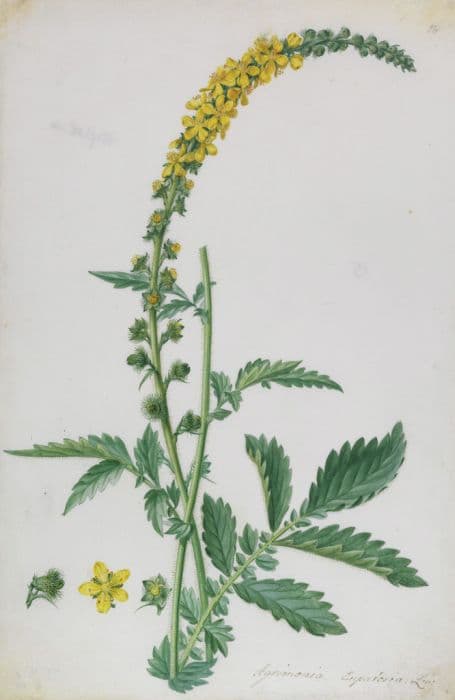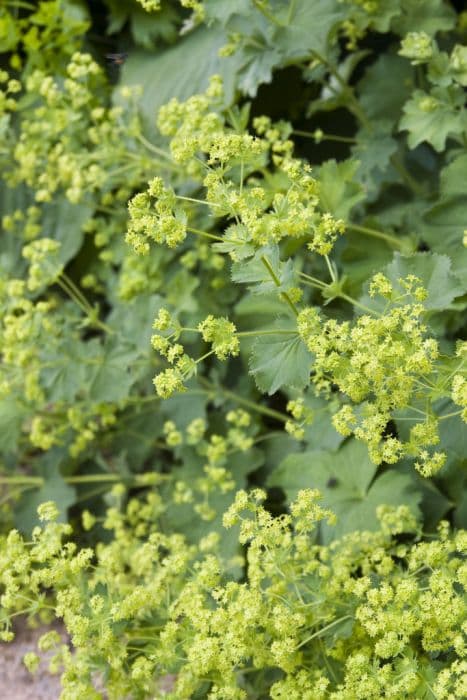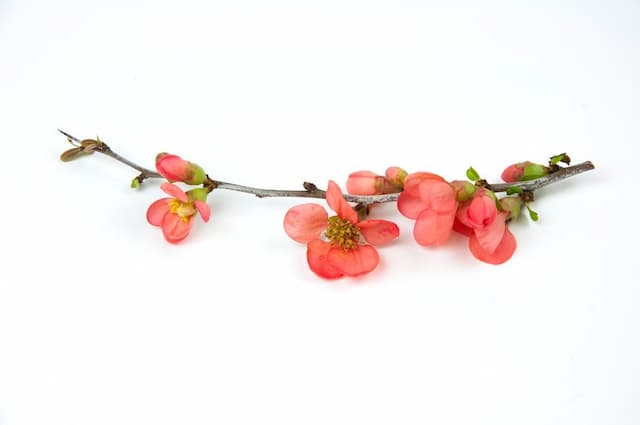Canadian Serviceberry Amelanchier canadensis 'Glenn Form'

ABOUT
Amelanchier canadensis 'Glenn Form', commonly known as Shadblow Serviceberry, presents an attractive display through the seasons. In early spring, this deciduous shrub or small tree is covered with delicate white flowers that emerge before the foliage, creating a striking contrast against the bare branches. The flowers are quite showy and consist of five petals each, forming plentiful clusters that are visually appealing and also attract pollinators. As spring progresses, the foliage unfurls to reveal leaves that are initially a vibrant green, with a slightly downy texture beneath. The leaves are oval to somewhat rounded in shape with finely toothed margins, contributing to the plant's soft, lush appearance. Throughout the summer, the green leaves provide a strong, verdant backdrop for other garden plants. Come autumn, the Shadblow Serviceberry offers a brilliant fall display with leaves that turn to fiery shades of orange and red, offering a striking visual spectacle. The fall foliage coloration adds warmth and depth to the landscape, making it a valued plant for seasonal interest. The Shadblow Serviceberry also bears fruit after the flowering period, with small, round berries that ripen to a dark purple or black color. These berries are not only attractive against the green summer leaves but are also edible and favored by birds and other wildlife. The fruits are appreciated by many for their sweet, somewhat blueberry-like flavor and can be used in jellies, pies, and other culinary creations. Overall, the Shadblow Serviceberry is known for its multi-season interest, with a sequence of ornamental features that include spring blossoms, attractive green summer foliage, stunning fall colors, and edible fruit. Each aspect of its appearance contributes to its popularity as a landscape plant, particularly for those seeking year-round visual appeal.
About this plant
 Names
NamesFamily
Rosaceae
Synonyms
Canadian Serviceberry, Shadblow, Shadbush, Juneberry
Common names
Amelanchier canadensis 'Glenn Form'.
 Toxicity
ToxicityTo humans
Serviceberry (Amelanchier canadensis 'Glenn Form') is generally not toxic to humans. In fact, the berries are edible and can be eaten fresh or used in various recipes such as pies and jams. There are no commonly reported symptoms of poisoning from consuming the berries of the serviceberry, and there are no known toxicities associated with other parts of this plant for humans when consumed in typical amounts found in a diet.
To pets
Serviceberry (Amelanchier canadensis 'Glenn Form') is not considered toxic to pets either. Similar to humans, the berries of the serviceberry are non-toxic and can be safely consumed by pets. There are no well-documented cases of poisoning from pets ingesting parts of the serviceberry plant. Therefore, no specific symptoms or consequences are generally associated with pet ingestion of this plant. However, it's always best to monitor your pets and prevent them from eating large quantities of any non-typical food items, as this can sometimes lead to gastrointestinal upset.
 Characteristics
CharacteristicsLife cycle
Perennials
Foliage type
Deciduous
Color of leaves
Green
Flower color
White
Height
15-20 feet (4.6-6.1 meters)
Spread
15 feet (4.6 meters)
Plant type
Shrub
Hardiness zones
4-8
Native area
North America
Benefits
 General Benefits
General Benefits- Wildlife Attraction: Attracts birds and pollinators, such as bees and butterflies, offering them a food source in the form of nectar, fruits, and shelter.
- Ornamental Value: Features showy, white flowers in spring and brilliant fall foliage, adding visual interest to landscapes.
- Native Plant Benefits: Being native to North America, it is well-adapted to local climates and supports native ecosystems.
- Edible Fruit: Produces edible berries that can be used in jellies, pies, and other culinary creations.
- Erosion Control: Its root system helps stabilize the soil and can prevent erosion, especially on slopes.
- Low Maintenance: Once established, requires minimal care, making it a convenient choice for gardeners of all skill levels.
- Seasonal Interest: Provides year-round interest with seasonal changes in flowers, fruit, and foliage color.
- Urban Tolerant: Can withstand urban conditions, including pollution and compacted soils, making it suitable for city environments.
- Drought Resistance: Once established, has the ability to withstand periods of limited rainfall.
- Adaptable: Tolerates a range of soil types and pH levels, making it versatile for different garden settings.
 Medical Properties
Medical PropertiesThis plant is not used for medical purposes.
 Air-purifying Qualities
Air-purifying QualitiesThis plant is not specifically known for air purifying qualities.
 Other Uses
Other Uses- Amelanchier canadensis 'Glenn Form', commonly known as Shadbush, can be used in wildlife gardens to attract birds, providing them with a source of berries to feed upon.
- The wood of Shadbush is hard and could potentially be used for making small tool handles or wooden items that require tough, dense wood.
- In landscape design, Shadbush can serve as a privacy screen when planted in groups due to its dense foliage during the growing season.
- The plant's early spring flowers can be used for decorative purposes in cut-flower arrangements.
- Shadbush's growth habit provides erosion control on slopes or riverbanks, helping to stabilize the soil with its root system.
- The fruit can be used in the kitchen for jams, jellies, or pies, adding a unique, sweet flavor to such homemade treats.
- Dried branches with berries can be incorporated into wreaths and dried flower arrangements for a rustic, natural decor.
- Fallen leaves of the Shadbush can be gathered and used as a natural mulch, providing nutrients to other plants as they decompose.
- In craftwork, the berries and leaves can be used to create natural dyes for fabrics or paper, yielding colors that range from blue to gray.
- During fall, the colorful foliage can offer an aesthetic addition to autumn-themed outdoor containers and garden displays.
Interesting Facts
 Feng Shui
Feng ShuiThe Serviceberry is not used in Feng Shui practice.
 Zodiac Sign Compitability
Zodiac Sign CompitabilityThe Serviceberry is not used in astrology practice.
 Plant Symbolism
Plant Symbolism- Renewal: Amelanchier canadensis, commonly known as Serviceberry or Shadbush, blooms in early spring, symbolizing new beginnings and the renewal of life.
- Hope: The Serviceberry is one of the first plants to flower after winter, its blossoms representing hope and the promise of coming warmth.
- Native American heritage: Serviceberry has been traditionally used by Native American tribes for food and medicine, representing a deep connection to indigenous culture and knowledge.
- Passing of time: The changing colors of Serviceberry leaves throughout the seasons remind us of the passage of time and the transient nature of life.
 Water
WaterThe Serviceberry, commonly known as Shadblow Serviceberry, should be watered deeply when the top 2 inches of soil feel dry to the touch. Early morning is the best time to water, allowing the foliage to dry out over the course of the day. On average, this might mean watering once a week with about 1 to 1.5 gallons of water for young plants. Established Serviceberries are more drought-tolerant and may require less frequent watering. During prolonged dry spells or extreme heat, increase watering to twice a week, ensuring that the plant receives a total of 2 to 3 gallons of water.
 Light
LightShadblow Serviceberry thrives in full sun to partial shade. The ideal spot for this plant is where it can receive at least 6 hours of direct sunlight daily, although it can tolerate and adapt to light dappled shade. Avoid deep shade locations, as this will reduce the plant's vigor and flowering potential.
 Temperature
TemperatureShadblow Serviceberry prefers a moderate temperature range and is hardy in USDA zones 4 through 8. The plant can survive winter chill down to -20°F and can handle summer highs up to around 90°F. Ideally, Serviceberry should be grown in an area where the temperature typically ranges from 60°F to 75°F during the growing season.
 Pruning
PruningPruning Shadblow Serviceberry is important to maintain its shape, encourage healthy growth, and remove any dead or diseased wood. Prune in late winter or early spring before new growth starts. It's typically sufficient to lightly prune the plant once a year, focusing on thinning out crowded branches to improve air circulation. Remove any suckers to maintain a tidy plant shape and structure.
 Cleaning
CleaningAs needed
 Soil
SoilThe Serviceberry prefers a well-draining soil rich in organic matter with a slightly acidic to neutral pH of 5.5 to 7.0. A mix containing loamy soil, compost, and some sand or perlite would support healthy growth.
 Repotting
RepottingServiceberry trees, being large shrubs or small trees, are not typically repotted once planted in the landscape. Transplant them if necessary during dormancy.
 Humidity & Misting
Humidity & MistingServiceberry thrives in average outdoor humidity levels. It does not require specific humidity adjustments when grown in its natural outdoor environment.
 Suitable locations
Suitable locationsIndoor
Serviceberry is unsuitable for indoor growth due to its size and light requirements.
Outdoor
Plant in full sun to partial shade, provide ample water, and ensure soil is well-draining.
Hardiness zone
4-9 USDA
 Life cycle
Life cycleAmelanchier canadensis 'Glenn Form', commonly known as the Shadblow Serviceberry, begins its life as a seed which requires stratification to break dormancy. Upon germination in early spring, the seedling emerges and develops into a young plant with foliage characteristic of Amelanchier species. As the plant matures, it forms a small to medium-sized deciduous shrub or tree that undergoes seasonal changes including flowering with white blooms in early spring before the foliage fully expands. Following pollination, often assisted by bees, the flowers develop into small purplish-black fruits, which ripen in early summer and are edible. The plant experiences vegetative growth throughout the spring and summer, adding height and width each year. As a perennial, it enters dormancy in the fall with leaves turning vibrant shades of red and orange before being shed, and overwinters in this state until temperatures warm again in spring.
 Propogation
PropogationPropogation time
Early Spring
Amelanchier canadensis 'Glenn Form', more commonly known as the Serviceberry, is often propagated through seed stratification, which reflects the seeds’ requirement for a period of cold to break dormancy. Yet the most popular method of propagation for this plant is softwood cuttings, which are usually taken in late spring to early summer. This process begins with selecting a healthy, young branch that has just started to harden but is still flexible. A 4 to 6 inch (about 10 to 15 centimeters) cutting is made, including several leaf nodes. Lower leaves are removed, and the cut end may be dipped in rooting hormone to encourage root development. The cutting is then planted in a moist, well-draining growing medium and kept under high humidity with warm temperatures until roots are established, which may take a few weeks. Regular misting can help to prevent the leaves from drying out during this critical period.









